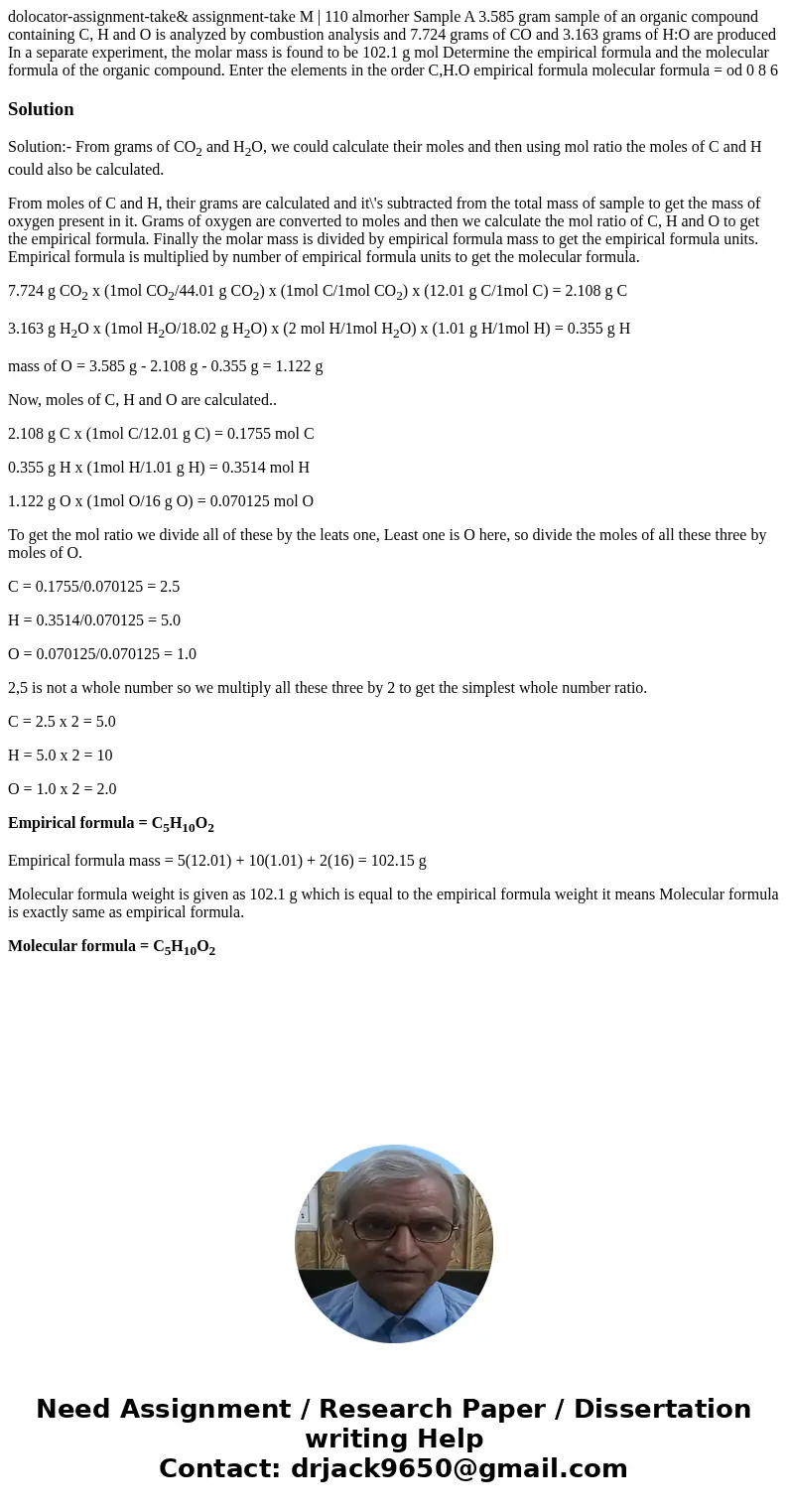dolocatorassignmenttake assignmenttake M 110 almorher Sampl
Solution
Solution:- From grams of CO2 and H2O, we could calculate their moles and then using mol ratio the moles of C and H could also be calculated.
From moles of C and H, their grams are calculated and it\'s subtracted from the total mass of sample to get the mass of oxygen present in it. Grams of oxygen are converted to moles and then we calculate the mol ratio of C, H and O to get the empirical formula. Finally the molar mass is divided by empirical formula mass to get the empirical formula units. Empirical formula is multiplied by number of empirical formula units to get the molecular formula.
7.724 g CO2 x (1mol CO2/44.01 g CO2) x (1mol C/1mol CO2) x (12.01 g C/1mol C) = 2.108 g C
3.163 g H2O x (1mol H2O/18.02 g H2O) x (2 mol H/1mol H2O) x (1.01 g H/1mol H) = 0.355 g H
mass of O = 3.585 g - 2.108 g - 0.355 g = 1.122 g
Now, moles of C, H and O are calculated..
2.108 g C x (1mol C/12.01 g C) = 0.1755 mol C
0.355 g H x (1mol H/1.01 g H) = 0.3514 mol H
1.122 g O x (1mol O/16 g O) = 0.070125 mol O
To get the mol ratio we divide all of these by the leats one, Least one is O here, so divide the moles of all these three by moles of O.
C = 0.1755/0.070125 = 2.5
H = 0.3514/0.070125 = 5.0
O = 0.070125/0.070125 = 1.0
2,5 is not a whole number so we multiply all these three by 2 to get the simplest whole number ratio.
C = 2.5 x 2 = 5.0
H = 5.0 x 2 = 10
O = 1.0 x 2 = 2.0
Empirical formula = C5H10O2
Empirical formula mass = 5(12.01) + 10(1.01) + 2(16) = 102.15 g
Molecular formula weight is given as 102.1 g which is equal to the empirical formula weight it means Molecular formula is exactly same as empirical formula.
Molecular formula = C5H10O2

 Homework Sourse
Homework Sourse